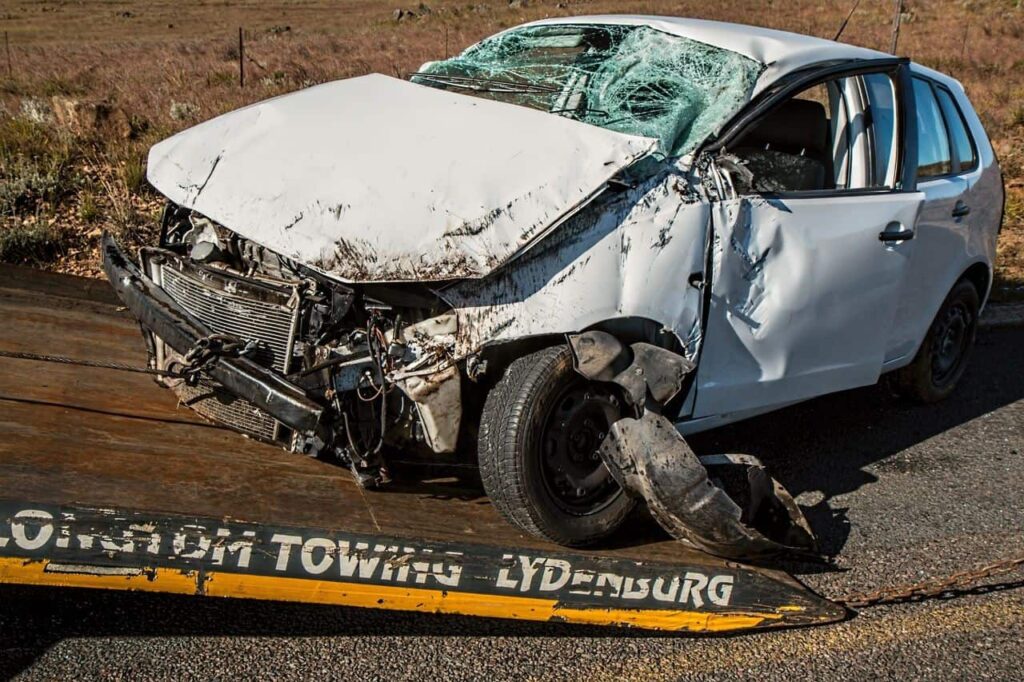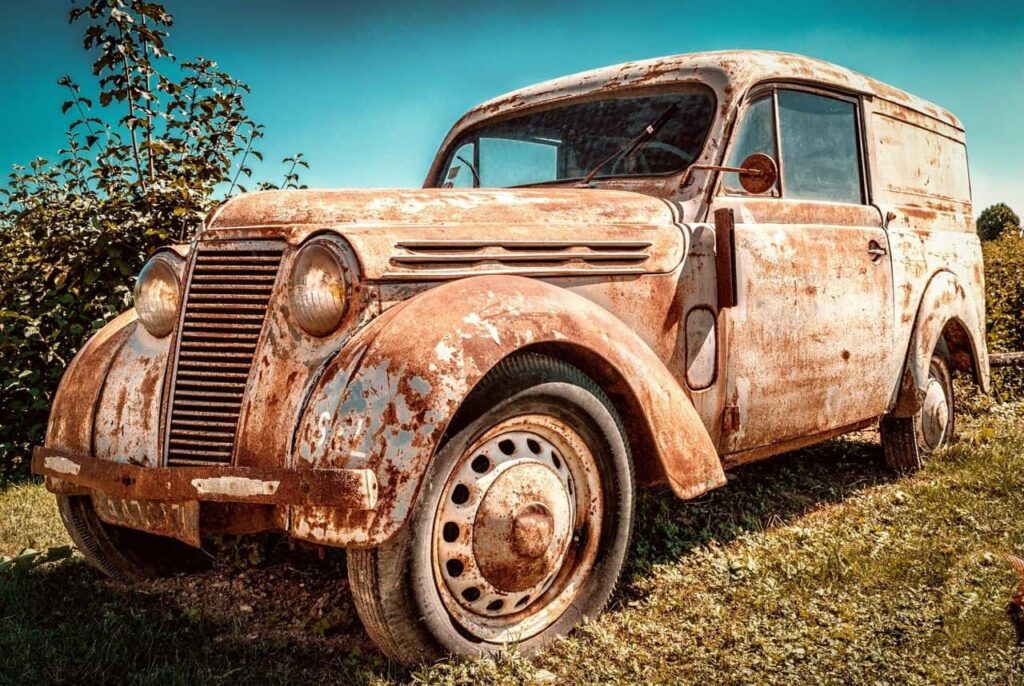9 March 2021 Concept Car
Buying a cheap car is tempting. Who wouldn’t like to save thousands of Pounds? On the other hand, it’s scary, too. All too often, you really do get what you pay for. And what can you expect from a car that merely cost 800 GBP?
Thankfully, things are never quite that black and white. You can still buy cheap cars. You just need to take some precautions and develop a sensible strategy.
Unfortunately, very few experts actually give you some hands-on advice on how to actually do this. That’s why we put together this special with plenty of helpful suggestions about how to get the most out of a bargain.
In it, you’ll learn …
Ready to save some money? Then let’s dive straight in!
This may come as surprise. Didn’t we grow up listening to the stories our parents would tell us: About how they bought a Beetle for 100 Pounds? How you could open up the classifieds and literally find dozens of cars each day at ridiculously low prices?
We did. And those stories are not without entertainment value. But the truth is that many of those supposed deals would fail each and every MOT today. And although you could indeed get a cheap car for 100 Pounds, it would more often than not merely last a few months.
In comparison, even today’s deals seem expensive. Then again, you can expect a much higher quality level. And you don’t need to be an experienced mechanic to tell if a used vehicle is safe to drive. (although it does help).
Overall, prices are excellent and there’s something just about for everybody.
Firstly, the Internet has significantly increased competition among private sellers, dealers and manufacturers.
From your laptop or smartphone, you now have instant access to thousands of car offers for the widest range of models. You don’t need to wait for newspapers and magazines to publish their ads. Instead, you can simply click your way through websites filled to the brim with current offers.
You can even compare prices across the country. In some cases, it may even be cheaper to buy in another city than locally.
These make it possible for almost everyone to finance a brand new car. They have also put upper end models at the disposal of the masses. Similar to leasing, which is also gaining ground, these deals usually have a limited time frame. So, after three years, owners return the vehicle to the dealer, who can then offer it as a second hand opportunity at a great price.
What this has also meant is that the average used car is now a lot younger than it used to be. That £100 Beetle your grandparents bought? It would probably not be allowed on UK roads today. Instead, the quality of used cars has steadily gone up. After they’ve been cleaned and checked, you’ll be hard pressed to tell the difference between a three-year old used car and a brand new one these days.
 At the same time, the too-good-to-be-true-deals have all but gone.
At the same time, the too-good-to-be-true-deals have all but gone.It’s something we’re sure you’ll recognise: You flick through the new car ads online and there are many excellent offers, but very few amazing deals out there.
Of course, everyone has their own definition of an amazing deal. And without a single doubt, for those patient and lucky enough to wait for their opportunity, there are still plenty of triumphs to be celebrated.
That said, in general, the second hand car market has become more professional at the expense of a bit of magic. You won’t be disappointed that often anymore. But you won’t be jumping for joy quite as often either.
It’s not that those deals no longer exist. Rather, you don’t actually get to see them anymore. For many sellers, it simply isn’t worth the trouble to even create an ad for a sub-1000 Pound car. Instead, they’ll simply ask around their circle of friends or dealers or perhaps send out a newsletter or place the car on their lot for visitors to see. This way, the too-good-to-be-true-deals no longer show up online.
This doesn’t mean you can’t get a great deal. Here’s how.
Simply lower your bar and all will be good? This may well be the least popular recommendation of all!
That, however, is not what we mean.
Reducing your expectations does not have to be a negative act. It merely means coming to terms with reality. In doing so, you’ll realise that there are always two sides to each coin.
Let’s make this more tangible with an example:
The general standard of manufacturing these days is breathtakingly high, so even lesser models will still perform pretty well. However, you do need to be aware of a few points when considering a really cheap car:
One simple way of reducing your expectations is to skip all luxuries. In practical terms, this means looking for basic edition cars without any of the typical extras which make them so attractive to most potential buyers.
The good thing about accessories is that you can always add them later – with a much better picture of what you would really like to add to your car.
 Don’t mind physical blemishes
Don’t mind physical blemishesOne of the recommendations you frequently get when inspecting cheap cars is to look for visible defects.
Now, as mentioned, you need to be realistic here. If a car is very cheap, there’s a reason for that. You can expect it to be passable. But you can’t expect it to be flawless.
Physical blemishes are precisely one of the reasons why a car is offered for a much reduced price. Taking them as a reason not to buy it or to even try and haggle the price down even lower are therefore somewhat absurd.
This is especially true when it comes to tiny dents or scratches. They do not affect the car’s performance in any way. But they are comparatively expensive to fix by a mechanic and would thus raise the purchase price considerably. Do ask yourself if these small aesthetic defects are really a reason not to go for a bargain!
Physical blemishes do turn into a more serious issue as soon as they make the car less safe to drive. This can be the case with actual holes in the car body or scratches in the window surface. When you discover major defects like these, you should never compromise and walk away from the deal if need be.
What’s that we hear you say? Doesn’t this piece of advice go against every imaginable wisdom doled out by car experts over the past decades? Haven’t the Japanese raised the bar in terms of reliability and affordability?
We’d be the very last to deny the outstanding craftsmanship and innovation of Japanese car manufacturing. Brands like Toyota keep dominating reliability ratings and sales charts for a reason: They’re likable, highly functional, hardly ever break down and have a remarkable life expectancy.
For many target groups, these are the best cars by far. Some will even go so far as to declare that buying anything but a Japanese car would be irrational.
At the same time, Japanese cars have been a victim of their own success in a way. Especially when it comes to used models, Japanese cars tend to be particularly in demand precisely because of their excellent reliability scores. As a result, they’re hardly ever very cheap.
Which should raise an eyebrow if you’re seeing a true bargain for a Japanese car. Either there’s something seriously wrong with it or it may not be a very good model. Even with Japanese cars, not all cars were created equal. Particularly versions with low motor power can make for disappointing drives.
We highly recommend used Japanese cars. We just think that you need to be very careful if they’re being offered at a steep discount.
Entry level cars sound like just the right thing if you’re looking to buy a cheap automobile. They’re simple and basic, fun to drive and still affordable. What could be better if you’re looking for a cheap deal?
In fact, this logic has it exactly the wrong way round. Precisely because they’re so popular, entry level cars are rarely very cheap. They also tend to hold their value well, since their popularity is seldomly diminished on the second hand market.
This doesn’t mean that these cars are out of the question. But if you’re serious about buying one of these at a truly affordable price, those models with a powerful engine or expensive luxury extras will be out of the question.
Older generations of the same model can be an excellent way of getting precisely the driving experience you’re looking for, yet at a far lower price point.
 The 10 year / 100,000 miles rule
The 10 year / 100,000 miles ruleWe usually tend to think of older cars with a lot of mileage as worse than younger vehicles with a low odometer reading. And they probably are.
Still, these are precisely the kind of cars we recommend you buy.
Why is that?
In a very interesting article, Clark recommend turning conventional logic upside down if you want to make a bargain:
“Ever heard of car manufacturers like Hyundai, Kia and Mitsubishi advertising their 10 year/100,000 mile auto warranties? That’s the inspiration for a different rule you should follow if you want to spend less than $5,000 on a used car: Look for cars that have at least 100,000 miles on them.”
On the one hand, this sounds like a really clever idea. But is it safe?
If you can believe the experts, 100,000 miles are nothing for a modern car. In many respects, a car only really starts getting ‘old’ as soon as it hits the 200,000 mile mark. The same goes for its age: As long as the owner drives the vehicle safely and regularly, 10 years are by no means the end of the line.
Obviously, a car with 50,000 miles may feel just a little fresher. But it won’t be quite as cheap, either. Remember what we said about lowering your expectations? This is where it applies.
Let’s say you’ve found a nice looking car for a mere 1,000 GBP. You’ve checked pictures of it online and gone over them with a tech-savy friend. You’ve talked to the seller and cleared up a few questions. The car has 120,000 miles on the odometer and is eight years old. You’re just not sure about the brand and this particular model, because you’ve heard quite a lot of bad things about it.
Should you go ahead and buy the car?
Here’s our take on this:
The reply to this question will obviously depend on your personal preferences and willingness to accept a certain degree of uncertainty. A bad feeling can just be a form of superstition. But it can also point towards something you somehow know but just can’t put into words.
The best solution to the dilemma is to step back from the entire issue for a second and try to take an outside view again: Should you take your doubts and fear seriously or dismiss them instead?
We feel that when it comes to a cheap car, everything can not be perfect. But if you’re really doubtful about the project, it is probably best to simply pay a little more. Even going from 1,000 GBP to 1,500 can sometimes make all the difference between a somewhat dodgy vehicle and a surprisingly good one.
Finding a really cheap car isn’t easy. But the one thing that makes it particularly hard is time pressure. Even if you do stumble upon a deal, there won’t be enough time to carefully weigh the implications in your mind: With thousands of other drivers also looking for a bargain, you will need to take a decision fast.
Does this mean that cheap cars are only for for those who will recklessly click ‘buy’ as soon as they see something remotely fitting their expectations?
No, it doesn’t.
But it does mean that you need to be prepared.
 Here’s a step-by-step plan of all the things you should do before starting your daily prowl for bargains:
Here’s a step-by-step plan of all the things you should do before starting your daily prowl for bargains:Checking all these points is going to cost you somewhere between five to ten minutes. Take this time! If someone else manages to snap the deal away from you in the meantime, so be it.
But in case of doubt, it is always worth it to wait a little longer until you’re absolutely certain you’re taking the right decision.
We’ve said it before, but we’ll gladly say it again and again: A car that’s not getting enough miles on the road is a safety hazard. You really need to drive a vehicle for all its parts to remain fully functional. This is why very low mileages are a cause for concern.
That said, not all miles were created equal. City miles are marked by a lot of stop and go, which causes wear and tear to the breaks. City cars tend to operate at low speeds, which aren’t ideal for the motor either.
In comparison, highway miles are clearly preferable. As wellrigged.com explains:
“The highway mile car has less cold starts, a fraction of the gear changes(transmission wear), a fraction of the brake wear, a fraction of the steering component wear and less suspension wear. Basically, if regular oil changes and basic maintenance can be proven, a highway mile car will have way more life than a city car of the same model and year.”
The message is clear: Try to find a car with a decent amount of highway miles.
So this leaves us with just one question:
For a layperson, this may seem like an impossible task. But don’t despair. There are a few signifiers which indicate that a car has predominantly been driven on the highway:
Finally, “frequent Oil change intervals in documentation if you can get a dealer record this is probably the best proof of all that it is indeed a highway car.”
Usually, you pay more for more. In some select cases, however, it can actually save you money to go for more.
In the world of cars, for example, four door models tend to be considerably cheaper than two door models.
This seems to go against conventional logic. Why pay more to get less doors? Especially in already small vehicles, this concept seems somewhat bizarre, since entering and exciting the car gets a lot easier with two additional doors.
The reason is, simply, that two door models have a certain charm and mystique surrounding them that sits well with a financially well-off audience. These cars look a little more sporty, slick and less functional, they also tend to offer more legroom to the front passengers at the expense of those in the back – which makes sense, since many of these cars are driven by one or two people at most anyway.
If you’re looking for a bargain, it can therefore make sense to favour 4 door models. They’re ultimately more practical and offer the same performance (at least in theory), while coming at a better price.
9 March 2021 Concept Car